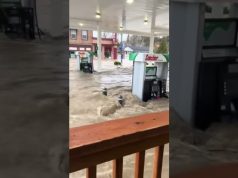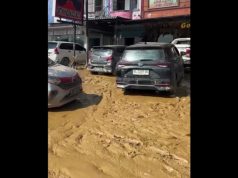ISLAMABAD, Monday, July 7, 2025 (WNP): With over 70 people dead and more than 130 injured in just ten days of monsoon rains, Pakistan is staring down the barrel of yet another potentially devastating weather spell.
The Pakistan Meteorological Department (PMD) forecasts this year’s monsoon rainfall to exceed average levels by 13%, with coastal districts like Thatta and Badin emerging as ground zero for the climate crisis.
The National Disaster Management Authority (NDMA) has raised alarm over the intensifying frequency and severity of extreme weather events. Despite contributing minimally to global emissions, Pakistan remains one of the most climate-vulnerable countries in the world—where droughts, floods, and sea intrusion are no longer looming threats, but daily realities.
A major contributor to this growing crisis is the evolving nature of rainfall patterns. “Precipitation events have changed dramatically,” said Dr. Furrukh Bashir, Director at PMD. “Previously, rains spanned several days with moderate intensity. Now, we face short-lived, highly intense bursts that cause flash floods and overwhelm drainage systems.”
A recent example is the deadly flood in Swat, where the river discharge surged to over 77,000 cusecs, causing widespread destruction and fatalities. In southern Sindh, shifting monsoon wind patterns have brought heavier-than-usual rains from the Bay of Bengal, inundating low-lying areas ill-equipped to handle such volumes.
Thatta and Badin, already on the margins of infrastructure development, are increasingly vulnerable. The 2022 floods exposed the critical lack of drainage and protective embankments in these regions. As roads turned into rivers and homes were submerged, entire communities were cut off for days.
Compounding the crisis is sea intrusion. In low-lying coastal towns like Keti Bandar and Badin, rising sea levels have carved deep inland channels, displacing families and damaging freshwater agriculture. PMD projections warn that this trend will accelerate over the next 5 to 10 years, increasing soil salinity and further degrading local livelihoods.
Despite regular alerts from PMD, gaps persist between early warnings and ground-level action. Dr. Bashir noted the contrast between the timely evacuation during the 2010 Attabad Lake disaster and the sluggish response in Swat this year. “Forecasting is not enough,” he said. “Without strong local coordination and clear decision-making, even accurate warnings lose their impact.”
He urged a multi-tiered approach to disaster management, particularly in coastal belts. Local authorities must be empowered to interpret and act on alerts swiftly. This includes strengthening district-level response systems, establishing defined command structures, and deploying rapid-response teams in high-risk zones.
Infrastructure also needs urgent attention. Reinforced embankments, improved drainage systems, and mapping of vulnerable points are essential for future preparedness. Alongside this, low-cost community solutions—such as rainwater harvesting, emergency shelters, and neighborhood cooling zones—can significantly enhance grassroots resilience.
The socio-economic challenges in areas like Thatta and Badin make evacuation and adaptation even harder. “We hear flood warnings on the radio, but where can we go?” said Naseema Khatoon, a 38-year-old mother of four in Badin. “Our livestock is our life. If we leave, we lose everything. So we stay, even if the water rises.”
Pakistan has made strides in building forecasting tools, including glacier lake outburst monitoring (GLOF) and tsunami alert systems. But as Dr. Bashir stressed, “Technology alone cannot save lives—public awareness, timely decision-making, and local action are just as critical.”
As monsoons grow fiercer each year, Pakistan’s future will depend on how it meets these recurring climate shocks. Through smart policy, strategic investments, and empowered local communities, vulnerable districts like Thatta and Badin could transform from crisis zones into models of resilience. The stakes are high—but so is the opportunity to forge a safer, climate-resilient future.




